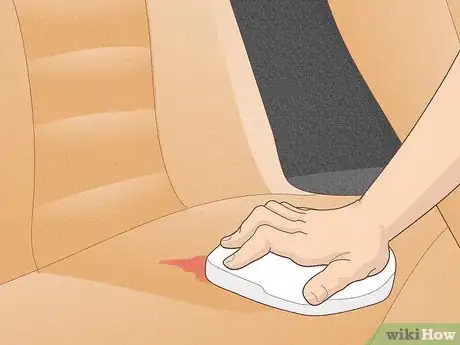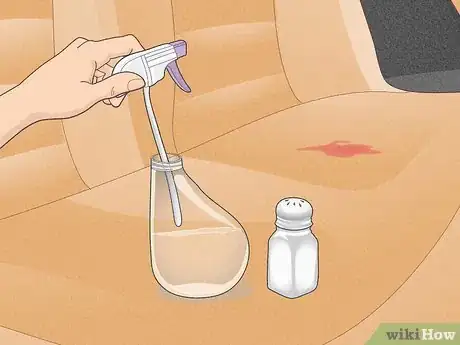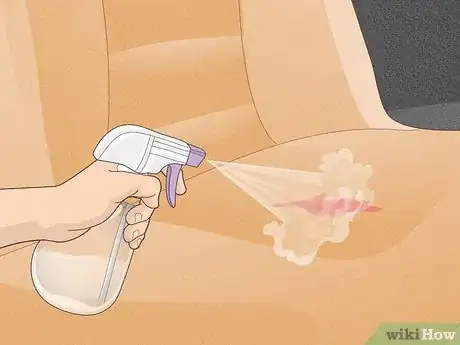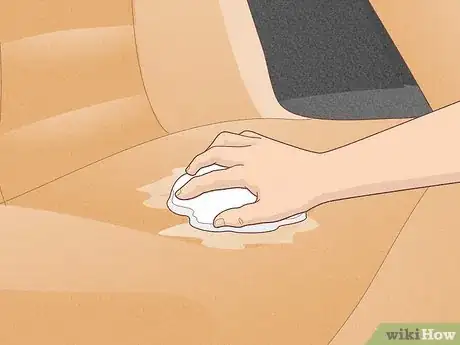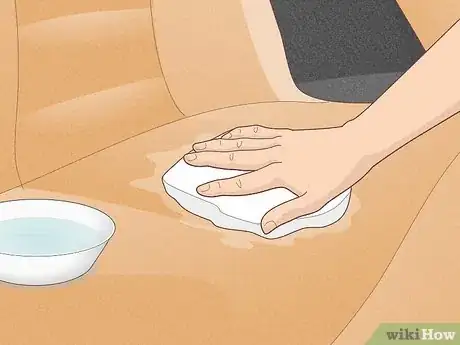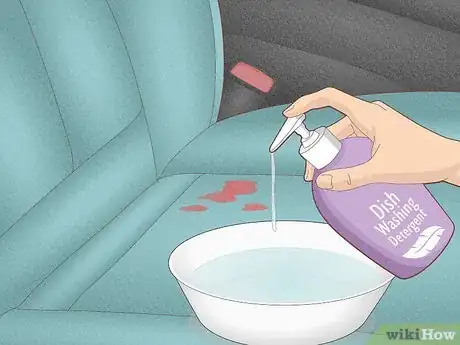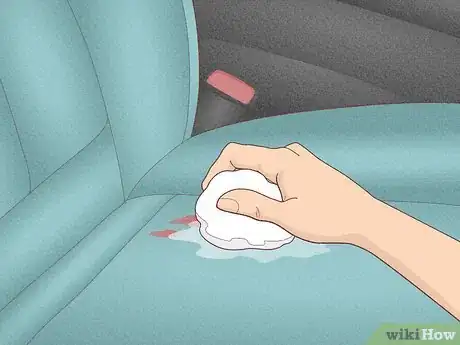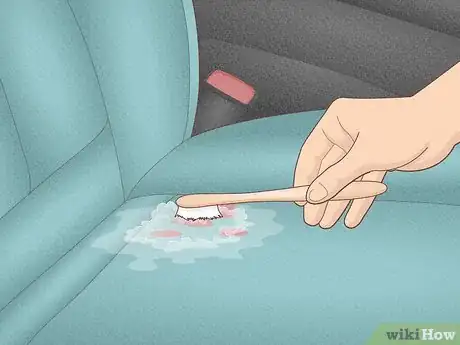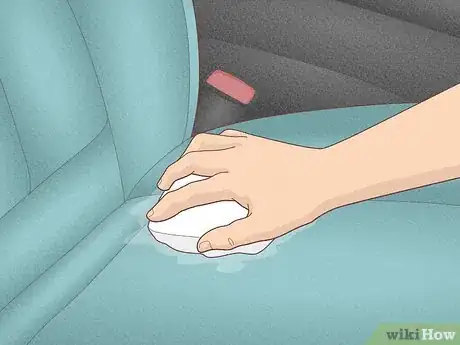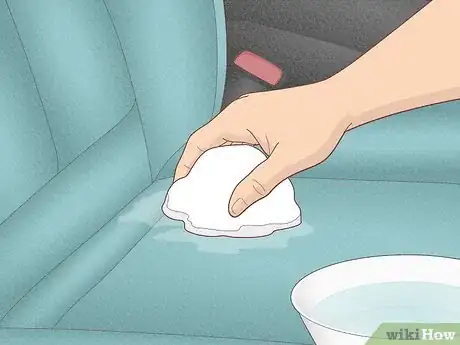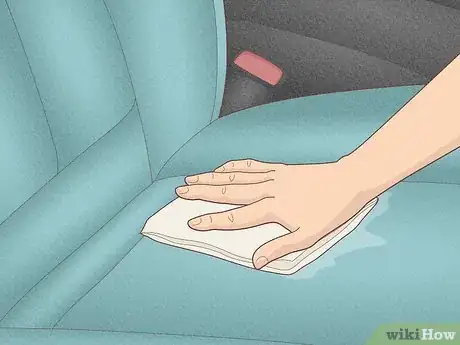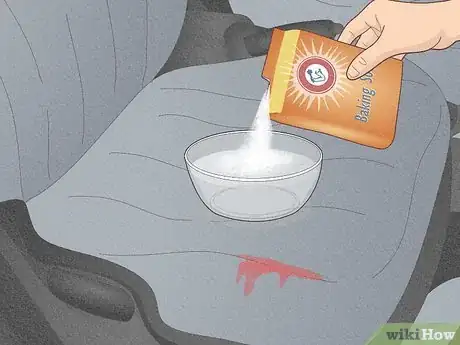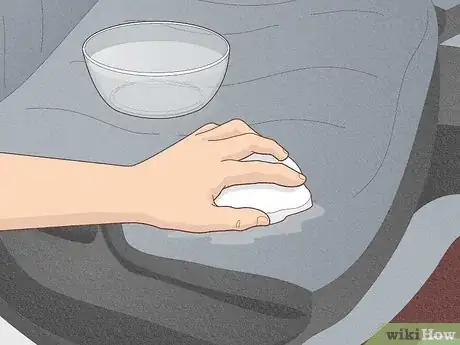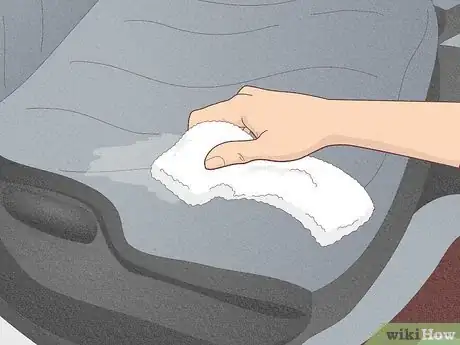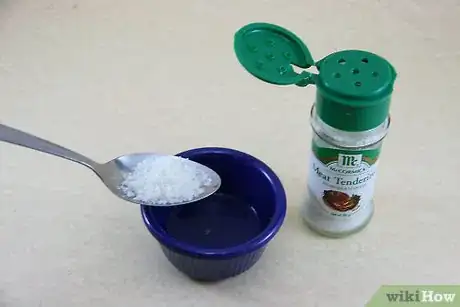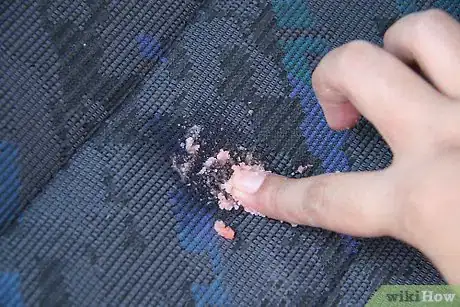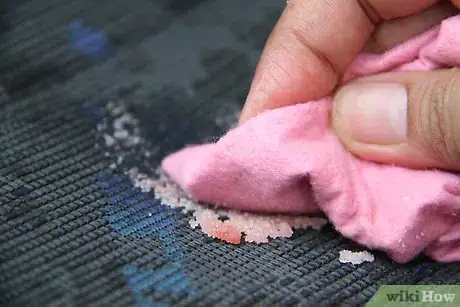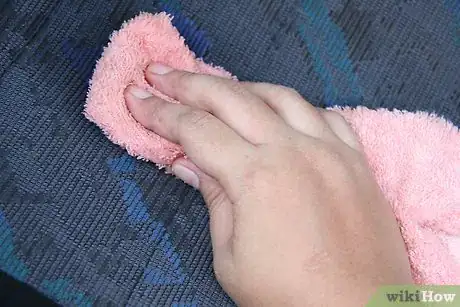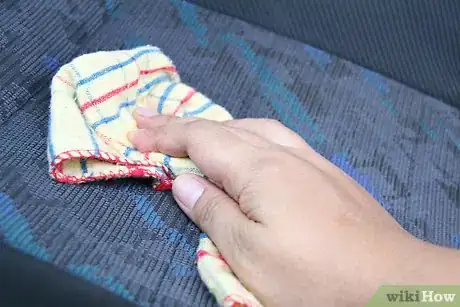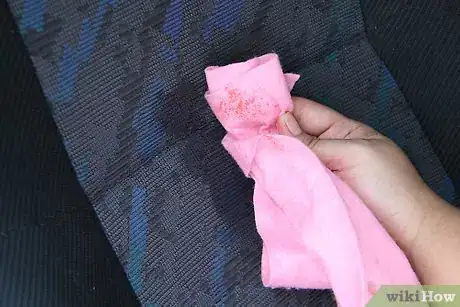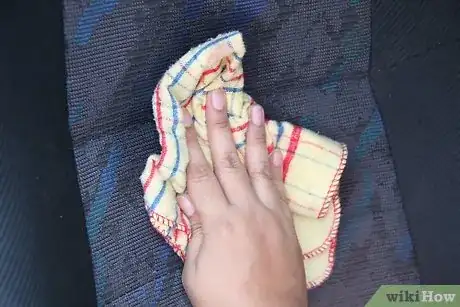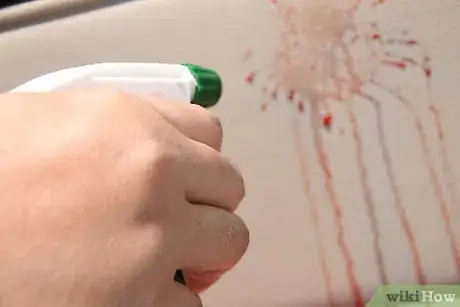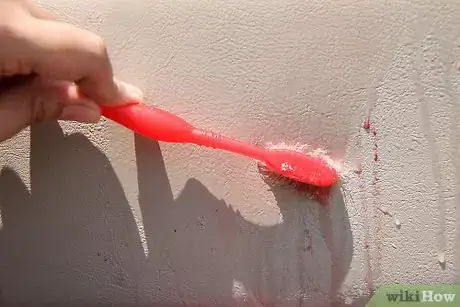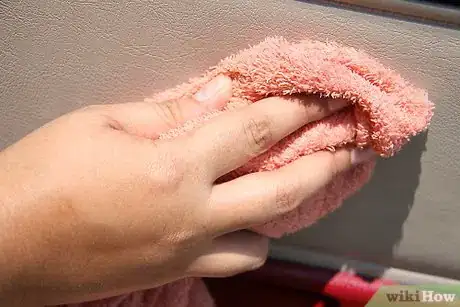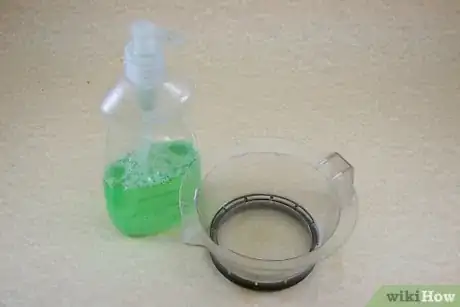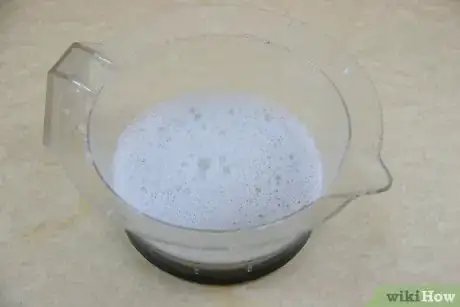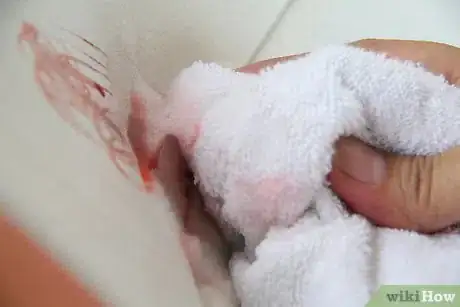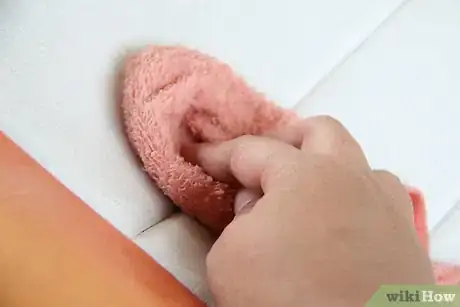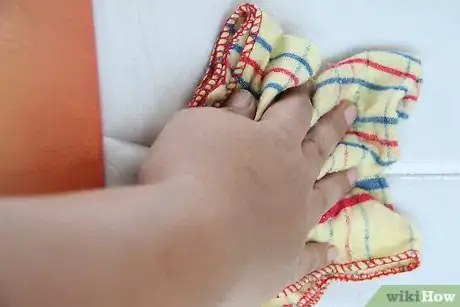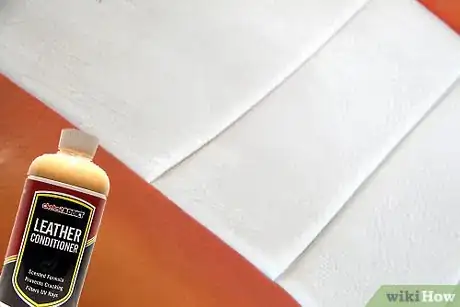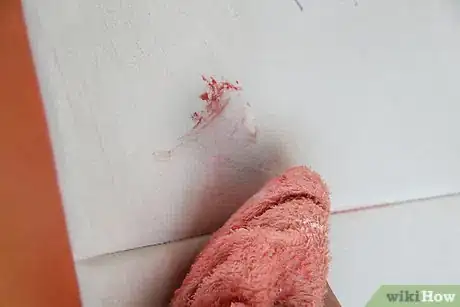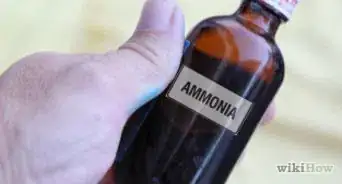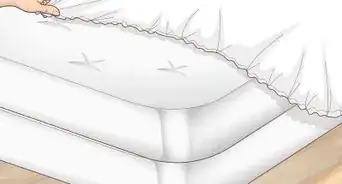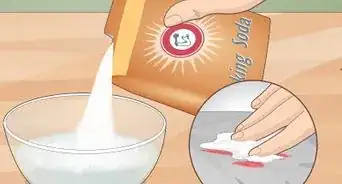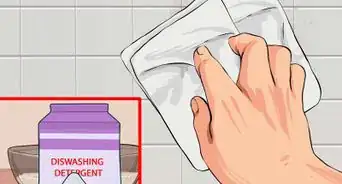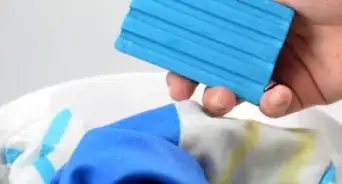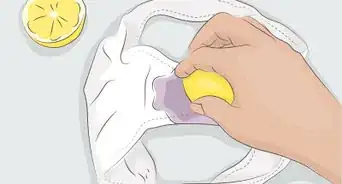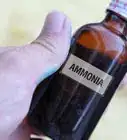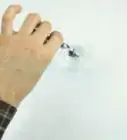This article was co-authored by Elias Weston. Elias Weston is a Cleaning Specialist and the Founder of Seatown Cleaners in Seattle, Washington. Elias specializes in helping clients find cleaning services with instant booking and flexible pricing. Seatown Cleaners offers standard, deep, and move-in/out cleaning services using green products and cleaning techniques. Every cleaner is thoroughly vetted and every cleaning is backed by a 100% money-back guarantee.
There are 11 references cited in this article, which can be found at the bottom of the page.
wikiHow marks an article as reader-approved once it receives enough positive feedback. In this case, several readers have written to tell us that this article was helpful to them, earning it our reader-approved status.
This article has been viewed 491,232 times.
Depending on your car upholstery, some methods of cleaning a blood stain will be better than others. It is important to deal with the blood stain immediately, as fresh stains are easiest to remove.[1] Time and heat can set the stain deeply in your upholstery, leaving an unsightly permanent mark, so grab your supplies, evaluate which method works best for your upholstery, and do your best to eliminate your stain!
Steps
Using Cold Saltwater (Cloth Upholstery)
-
1Blot the stained area with a damp cloth. You might benefit from using a cloth or paper towel to remove excess blood. Don't rub the stain, as this can spread the blood stain or push it deeper into your upholstery. Use a dabbing motion to try and remove as much of the blood as you can, changing the cloth/paper towel when needed.
-
2Prepare a saltwater solution. Mix 2 teaspoons of salt with 1 cup of cold water and pour the solution into a spray bottle. Hot or even warm water can set the blood stain permanently to your car upholstery, so be sure to use cool water when applying the solution to your stain.Advertisement
-
3Spray the saltwater solution on the stained area. If you don't have a spray bottle, dip a clean, white cloth in the saltwater solution and blot the affected area, changing your cloth as necessary.
- If you are working on a large stain, start on the edges and work your way towards the center; this will keep the stain from spreading.
-
4Blot the area with a dry cloth to absorb the excess solution. Repeat spraying and blotting until the blood stain is gone or the cloth is not absorbing any more blood.
-
5Rinse your blood stain thoroughly. Use a cloth dampened with cold water, rinse the remaining solution from the spot. Try not to scrub at the spot; dabbing motions will draw out the excess solution most effectively.
-
6Dry the area. Using a dry cloth or paper towel, dry the area by gently pressing it to the stained area. If the stain is still visible, you may have a permanent stain, but a stronger method might also solve your problem.
Using a Dish Detergent/Water Solution (Cloth Upholstery)
-
1Create a solution with dish washing detergent and cold water. Mix 1 tablespoon of liquid dish washing detergent with 2 cups of cold water in a large bowl to make a detergent solution.[2]
-
2Apply your solution to the stained area. Soak a clean, white cloth with your dish detergent/cold water solution and apply it to the affected area.
-
3Brush the stained area gently. A normal sized scrub brush might cause you to scrub too vigorously, pushing the stain deeper into the fabric. Using a toothbrush will keep you from brushing too hard, which might cause the stain to spread or permanently set into your upholstery.
-
4Blot the area. With a clean, wet cloth, rinse the solution using dabbing motions. For stubborn stains, re-apply your solution and scrub it again with your toothbrush. When you have finished scrubbing, you should rinse the area again with a clean, wet cloth.
-
5Make a final rinse. This time, using a cloth wet with cold water, rinse the remaining solution out of your upholstery. Rinse thoroughly with dabbing motions.
-
6Dry the area. Use a cloth towel to dry the area, pull out the excess moisture by blotting the towel to it until most of the moisture is removed.
Using Baking Soda (Cloth Upholstery)
-
1Make a baking soda solution. Mix 1 part baking soda and 2 parts cold water in a large bowl to make your cleaning solution.
- The chemical properties of baking soda make it an effective and affordable stain removing option.[3]
-
2Apply the solution. Using a clean cloth, apply your solution to the stained area of your upholstery. You should let it sit for 30 minutes before attempting to rinse the stain.
-
3Rinse the stained area. Using a cloth thoroughly dampened with cold water, rinse the remaining solution from your upholstery. Rinse thoroughly with dabbing motions until you have removed as much of the stain as possible.[4]
-
4Dry the area. Use a dry towel to blot the remaining moisture, absorb and removing it from the fabric of your upholstery.
Using a Meat Tenderizer Paste (Cloth Upholstery)
-
1Make your solution. Mix 1 tablespoon of meat tenderizer with 2 teaspoons of cold water in a small bowl to make a paste.[5] Mix thoroughly until the paste is of uniform consistency.
- Meat tenderizer is a great option for removing old blood stains. Meat tenderizer breaks down proteins found in blood, making it an effective blood removing agent.[6]
-
2Apply your paste liberally to the stain. Use your fingers to gently spread the paste on the blood stain. You should rub the paste into the fabric with your fingers, but be sure to do this without applying too much pressure. Let it sit for 1 hour.
-
3Clear the excess paste. With a dry cloth, you can brush off the excess paste, taking care not to spread or reapply the stain that has been pulled out and absorbed by the meat tenderizer.
-
4Rinse the stained area. To clear off any remaining paste, take a cloth that you've wet with cold water, and lightly dab until you no longer bring up any paste or stain. Be sure you rinse thoroughly, any paste you leave behind may get rubbed into your upholstery and stain it again.
-
5Dry the area. Excess moisture should be lifted from the rinsed area using a dry towel applied to the area with blotting motions.
Using Hydrogen Peroxide (Cloth Upholstery)
-
1Apply hydrogen peroxide directly to the blood stained area. Moisten the affected area with 3% hydrogen peroxide and allow the stain to sit for about 30 seconds. Keep careful track of time, allowing the peroxide to sit for too long could do damage to your fabric.[7]
- Hydrogen peroxide, while highly effective at cleaning blood stains, should be used as a last resort. This substance has bleaching properties, and can weaken the fabric of your upholstery or, in some cases, discolor it. Test a small hidden area before using hydrogen peroxide.[8]
-
2Blot the foamy substance with a clean dry cloth. If any stain remains after you have blotted the area clean, you can repeat the process, reapplying the peroxide and blotting it until the blood stain is gone.
-
3Rinse the area. A clean cloth, thoroughly moistened with cold water, should be used to rinse the remaining solution from the stained area. Be sure to rinse the area well; leaving behind peroxide may discolor or damage your upholstery.
-
4Dry the area. By blotting the rinsed area with a clean, dry towel, you can pull out excess moisture until only a damp spot remains, which you can allow to air dry.
Using Ammonia/Dish-washing Liquid Detergent (Vinyl Upholstery)
-
1Create your solution. Mix 1/2 teaspoon of dish-washing liquid and 1 tablespoon of ammonia in a spray bottle. Fill the bottle with cold water and mix your solution completely.
- Ammonia is a strong cleaner and can break down the protein in blood that makes it so hard to remove.[9] It is important to dilute this cleaner before using it, and, as with any cleaning agent, it is best to test a small, hidden area first before using.
-
2Apply the solution. Spray the solution on the blood stain and allow it to sit for about 5 minutes. This will allow your cleaning solution to work its way deeply into the affected area, cleaning it more thoroughly.
-
3Scrub the affected area. You should be careful not to scrub too hard, and to prevent this from happening, you may want to consider using a toothbrush to scrub your stain.
-
4Blot the spot with a clean cloth. Repeat the spraying, scrubbing and blotting process until the blood stain is gone or until you no longer see the stain coming off on your clean cloth.
-
5Rinse the stained area. Rinse the remaining solution using a cloth dampened with cold water. It is important that you rinse thoroughly; leaving your cleaning solution behind may do damage to your upholstery.
-
6Dry the area. Pull the remaining moisture from the affected area by using a dry towel to dab it dry. Allow any remaining dampness to air dry.
Using Dish Soap and Water Method (Leather Upholstery)
-
1Prepare your cleaning solution. Mix 1/2 teaspoon of liquid dish washing soap with a small amount of water in a small bowl to make a solution. Stir the solution until the soap is completely absorbed by the water.
- Soapy water can remove blood stains from leather, but the harsher the soap, the greater the chance you may do damage to your leather. Use a mild soap and test your cleaner on a small, out of sight spot to make sure your solution is right for your upholstery.[10]
-
2Agitate the solution. Stir the solution until lots of soap suds are formed. This will more effectively clean the stain off your upholstery.
-
3Apply your solution to a soft cloth. A scrub brush or rough cloth can do damage to leather, especially high quality leather that's soft to the touch. Dip your soft cloth into the soap suds and wet it thoroughly before attempting to remove the stain.
-
4Wipe your stain gently. With your soapy cloth, wipe the stain repeatedly, using light pressure, until it begins to come off on your rag. For stubborn stains, you may need to repeat the process a few times, but when you no longer pull the stain from the affected area, you have removed as much as you are able with your solution.
-
5Rinse the stained area. Use a clean, damp cloth to rinse off any remaining solution. Make sure to rinse the area thoroughly, as soap can leave a film or do damage to your upholstery.
-
6Dry excess moisture. You can now use a dry towel to extract any remaining moisture from your upholstery. After you have dried as much as you are able, you can allow any residual dampness to air dry.
-
7Follow up with a leather conditioner. This will help prevent future stains and seal some added moisture into the leather to prevent it from cracking over time. You can find leather conditioner at most hardware and auto stores, or in the auto section of larger retailers.
Using Cream of Tartar (Leather Upholstery)
-
1Make your solution. Mix 1 part cream of tartar with 1 part lemon juice in a small bowl to make a paste.[11] Be sure that your solution is thoroughly mixed throughout the solution before applying it to your stain.
- Cream of tartar is most useful for removing deep-colored stains, like blood, from leather.[12]
-
2Apply the paste to your stain. You should apply the paste with a toothbrush and gently rub on the blood stain. Allow your paste to sit for 10 minutes before removing it.
-
3Remove the paste and reapply it if necessary. You can use a damp rag to brush off the paste. If the stain remains, try re-applying your paste until the stain is gone or you no longer remove anything from the discolored area.
-
4Rinse the stained area. Use a clean damp cloth to rinse off what remains of your cleaning paste. Make sure to rinse the area thoroughly, as leaving behind your cleaning paste might do damage to your leather upholstery.
-
5Dry the remaining moisture. Use a dry towel to soak up any excess moisture left over from your rinsing. When you have absorbed all the moisture you are able, you should allow the area to air dry.
-
6Follow up with a leather conditioner. This will help prevent future stains and seal some added moisture into the leather to prevent it from cracking over time. You can find leather conditioner at most hardware and auto stores, or in the auto section of larger retailers.
Expert Q&A
-
QuestionWhat do I do if the blood stain is already dry?
 Elias WestonElias Weston is a Cleaning Specialist and the Founder of Seatown Cleaners in Seattle, Washington. Elias specializes in helping clients find cleaning services with instant booking and flexible pricing. Seatown Cleaners offers standard, deep, and move-in/out cleaning services using green products and cleaning techniques. Every cleaner is thoroughly vetted and every cleaning is backed by a 100% money-back guarantee.
Elias WestonElias Weston is a Cleaning Specialist and the Founder of Seatown Cleaners in Seattle, Washington. Elias specializes in helping clients find cleaning services with instant booking and flexible pricing. Seatown Cleaners offers standard, deep, and move-in/out cleaning services using green products and cleaning techniques. Every cleaner is thoroughly vetted and every cleaning is backed by a 100% money-back guarantee.
Cleaning Specialist If the stain is old, try to remove as much of the dry, excess material with a soft-bristled toothbrush. Check the manufacturer’s label for specific care instructions because some materials can be treated with water, while others may require special cleaning products. Then, pre-treat the stain before cleaning it by soaking a clean cloth in cold water and gently blotting the area. Next, make a paste by thoroughly mixing 1/2 cup of baking soda with ¼ cup of liquid dish soap and 4 cups of water. Using a clean cloth, dip it into the foamy solution and soak the affected area. Take another clean, dry cloth and blot the area to lift the stain from the upholstery. Alternate between saturating the area with the baking soda solution and blotting with the clean cloth until the stain is gone.
If the stain is old, try to remove as much of the dry, excess material with a soft-bristled toothbrush. Check the manufacturer’s label for specific care instructions because some materials can be treated with water, while others may require special cleaning products. Then, pre-treat the stain before cleaning it by soaking a clean cloth in cold water and gently blotting the area. Next, make a paste by thoroughly mixing 1/2 cup of baking soda with ¼ cup of liquid dish soap and 4 cups of water. Using a clean cloth, dip it into the foamy solution and soak the affected area. Take another clean, dry cloth and blot the area to lift the stain from the upholstery. Alternate between saturating the area with the baking soda solution and blotting with the clean cloth until the stain is gone.
Warnings
- When handling blood that is not yours, wear protective gloves to prevent yourself from the risk of catching blood borne diseases.⧼thumbs_response⧽
- Never mix ammonia and chlorine bleach. It will result to hazardous fumes.⧼thumbs_response⧽
- Do not use anything hot on blood stains. The heat will cook the protein that is in the blood, causing the stain to set in.⧼thumbs_response⧽
- Do not use an alkaline cleaner on your leather upholstery as it may damage the finish.⧼thumbs_response⧽
- Do not inhale ammonia; it is hazardous to your health.⧼thumbs_response⧽
- Avoid using oil-based cleaners for vinyl as it can cause the vinyl to harden.⧼thumbs_response⧽
- Be cautious when working with leather. Its surface is very delicate, and can easily be damaged.⧼thumbs_response⧽
- Avoid using harsh detergents, solvents and abrasives on vinyl or leather upholstery. These can cause damage to the material.⧼thumbs_response⧽
Things You'll Need
- White cloths (all methods)
- Cloth towel (all methods)
- Salt (Cold Saltwater method)
- Paper towels (Cold Saltwater method)
- Spray bottle (Cold Saltwater, Ammonia and Dish-washing Liquid Detergent methods)
- Liquid dish washing detergent (Detergent and Water, Ammonia and Dish-washing Liquid Detergent methods)
- Toothbrush (Detergent and Water, Ammonia and Dish-washing Liquid Detergent methods)
- Ammonia (Ammonia and Dish-washing Liquid Detergent method)
- Large bowl (Detergent and Water, Baking Soda methods)
- Baking soda (Baking Soda method)
- Hydrogen peroxide (Hydrogen Peroxide method)
- Small bowl (Meat Tenderizer method)
- Meat tenderizer (Meat Tenderizer method)
- Cream of tartar (Cream of Tartar method)
- Lemon juice (Cream of Tartar method)
- Leather conditioner (Leather methods)
References
- ↑ https://www.textileaffairs.com/stains.htm
- ↑ http://www.stain-removal-101.com/blood-stain-removal.html
- ↑ http://www.howtocleanstuff.net/how-to-remove-blood-stains/#AdditionalTipsandIdeas
- ↑ http://greenopedia.com/remove-stains-naturally/
- ↑ http://www.howtocleanstuff.net/how-to-remove-blood-stains/#AdditionalTipsandIdeas
- ↑ http://www.stain-removal-101.com/meat-tenderizer-uses.html
- ↑ http://www.housecleaningcentral.com/en/cleaning-tips/stain-removal/blood-stains-tips.html
- ↑ http://www.housecleaningcentral.com/en/cleaning-tips/stain-removal/how-to-remove-dry-blood-stains.html
- ↑ http://www.housecleaningcentral.com/en/cleaning-tips/stain-removal/remove-blood-stains.html
About This Article
To clean a blood stain from car upholstery made of cloth, start by mixing 2 teaspoons of salt with 1 cup of cold water and spraying it on the stain. Next, blot with a dry cloth, then continue spraying and blotting until the stain is gone. Alternatively, apply a solution of 1 part baking soda to 2 parts cold water to the stain, and leave it for 30 minutes. Once you’ve treated the stain using either of these solutions, dab the area with a cloth dampened in cold water to draw out any excess solution, then press a clean cloth on it to dry the upholstery. To learn how to clean your leather or vinyl upholstery, keep reading!
